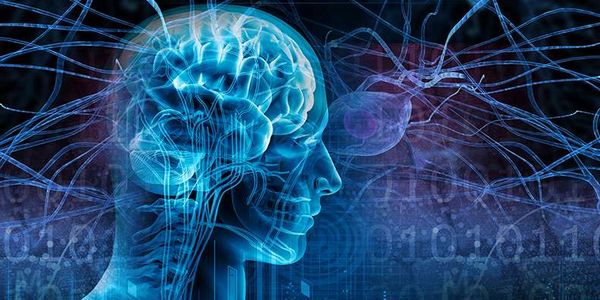Dyslexia-treatment. Symptoms and prevention of diseases of Dyslexia

Dyslexia is a collective concept, that characterizes the specific violations of the reading process (difficulty reading, defects), in terms of sustainable recurring errors.
Dyslexia — causes
The question about the causes of dyslexia so far remains controversial. Some authors note the hereditary (genetic) predisposition to quality immaturity of individual sections of the brain. But, a large part of scientists converge in opinion regarding the localization of cortical dysfunction-suffering from the left hemisphere and the centers of the brain, directly connected with the understanding (Wernicke's area) and speech motor skills (Broca's area). Also disturbed neural link between these areas.
Many authors have noted a number of factors (biological and social), that might influence prenatal pathologically, natal and post-natal periods. This may be a pathology of pregnancy, delivery, asphyxia.
Functional causes can be internal (long-running somatic diseases, for example) and external (incorrect or drujazychie parent child, their inattention to the speech development of the child, etc.). All of the above can affect the formation of mental functions, participating in the process of reading.
Dyslexia Symptoms
Clinical manifestations of dyslexia are highly dependent on the type of, its degree of severity and the level of mastering the skill of reading.
You can select multiple groups errors, committed with dyslexia:
- Rotation and mixing phonetically close sounds when reading and/or replacement of the graphically similar letters (w-x, in-w);
- Distortion sound-syllabic structure of words, in case of skipping the consonants in Confluence, inversion of syllables and/or sounds, skipping the syllables, etc.;
- Violation of merging of letters in Word (cannot create syllables), ie. document literal reading (instead of m-a-m-a m read, and, m, and);
- Violation of the comprehension of the text, suggestions or individual words;
- Agrammatism reading, ie. violation of the harmonization of nouns with adjectives, ignoring case endings, endings of verbs, etc.;
It is also important to pay attention to indirect signs, on which one can suspect dyslexia in a child:
- The child tries to avoid reading, staying focused on anything outside;
- Quickly get tired when reading, presents the complaints of headache;
- Bad handwriting, napolzanie words of each other, writing letters or words in the wrong order, reluctance to read written to verify;
Dyslexia — Diagnostics
Diagnosing dyslexia is not easy enough. Often parents do not know about the availability of this pathology in your child, until he goes to kindergarten.
Diagnosis begins with a vision and hearing checks. If the disease is not detected, the next step is conducted a neurological examination, to exclude a neuro-psychological immaturity the child or other neurological pathology. Then conducted cognitive testing, in the course of which is determined by the child's ability to read and understand read, identifies problems in the process of reading and listening material, indicators are compared with due regard for the particular age level. Assesses the quality of speech perception. On the basis of the received data is determined by the type of dyslexia and suitable for particular child teaching methodology.
It is also very important to build a complete family history in order to identify mental and emotional disorders. A psychological survey of the child helps reveal the emotional aspects, intensifying problems with reading.
Dyslexia is a kind of disease
The accepted classification of dyslexia is not. Because there is a huge variety of this pathology.
Depending on the manifestations, there is 2 types of dyslexia:
- A literal (the problem with learning letters)
- Note (difficulties arise with learning words)
A normal reading is possible only when adequate, coordinated work of three analyzers-auditory, Visual and motor. Depending on the parser, which initially disturbed, secrete 3 forms of dyslexia:
- Acoustic form (maturation of auditory perception)
- Optical form (the lack of a clear perception of the image letters, volatility of visual perception)
- Motor form (the coordination of the eyes when reading, loss of individual words and lines out of sight)
Depending on the broken mechanisms entails the following types of dyslexia:
- Optical (inability to grasp the letters, their vzaimozamena)
- Fonematicheskuju (violation of phonemic perception)
- Semantic (mechanical reading)
- Opto-spatial
- Mnesticheskuju (problems with uchtanovleniem connection between the letter and sound)
It is believed, that children may be only the first 2 types of dyslexia, as other species associated with organic lesions of the brain.
Secrete agrammaticheskuju dyslexia and tactile (from blind children).
Dyslexia — patient
At the first suspicion of the presence of this disease in the child should immediately consult a doctor. The sooner will be the diagnosis, the more time will be for learning to read by rationally chosen methodology.
Dyslexia-Treatment
Treatment is correction scholastic process, that includes direct and indirect selection skills of the constituent elements of words and to recognize words in total. We also recommend using a methodology involving the process of multiple senses.
In children older than 8 years along with exercises apply nootropic drugs, such as piracetam.
The effectiveness of such treatments, both perceptual and optometry training, not proven.
Dyslexia — Complications
Late effects of treatment your doctor may be mental retardation of the child, his disorientation in space, attention deficit syndrome, cognitive abnormality, delayed speech development.
Dyslexia Prevention
Dyslexia early prevention measures could include meaningful development in the child of those mental functions, that is required to master the skill of reading. Also in the prevention of this disease, it should be noted these activities:
- Health protection of pregnant, generic warning injury;
- Early identification of violations of the reading process and timely recourse to professionals;
- Individual approach to teaching children with this pathology.
